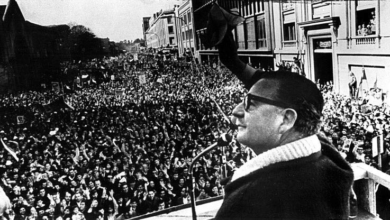On Oct. 12, the National Organization of Indigenous Colombians (ONIC) coordinated various blockades throughout the country, demanding their right to their lands, their culture and political autonomy, and against the right-wing violence perpetuated by President Álvaro Uribe.
|
|
For the past 15 years, the Colombian government has promised 15,663 hectares, or 38,687 acres, to the ONIC. The government claims it has bought 11,866 and that it still needs to buy the remaining 3,796 before it can begin the distribution.
Major commercial arteries—including the Pan-American Highway connecting Colombia to neighboring countries—have been taken by the ONIC. Protests and blockades have occurred in 14 of Colombia’s 23 regions.
From Oct. 12 to 15, three Indigenous people were killed, including one child. Over a hundred more have been injured as the local police and military have opened fire on those participating in the actions.
Uribe defended the state violence against innocent men, women and children, saying, “whoever dares to dissent is a terrorist.” Uribe has falsely accused the ONIC of inciting violence and killing policemen, even though no policemen or army personnel have died.
In the last six years, more than 1,200 Indigenous people have been assassinated, 55,000 have been displaced, more than 400,000 still do not have access to their lands and 18 tribes are in danger of extinction. In the first two weeks of October, police or paramilitary death squads killed 10 Indigenous people.
The president of the ONIC, Luis Evelis Andrade, said he was willing to fight until the last consequences. “It’s preferable to die talking, then to die in silence,” said Andrade.
Coming on the heels of three major workers’ strikes, the Indigenous protests have added fuel to the fire of the Colombian struggle. In August, truck drivers spent weeks on strike demanding government subsidies to offset high fuel prices. For 44 days starting in September, 40,000 judicial workers went on strike, shutting down every court process in the entire country. In the southern region of el Valle del Cauca, 18,000 sugarcane workers have begun a strike for better pay.
In solidarity with the Indigenous and the workers’ struggles, the Central Workers Unitarian, (CUT) the largest union in the country, has called for manifestations strikes across the country by its rank and file on Oct. 16.
The repressive Colombian state stands in sharp contrast with the “bastion of democracy” fabricated by Washington for public consumption. Those who fight for unions and Indigenous rights are openly assassinated by paramilitaries acting in collusion with the Colombian government and foreign corporations. More labor leaders are assassinated in Colombia than anywhere else in the world.
A succession of reactionary Colombian administrations have ensured safe access to the country’s markets for U.S. and other foreign corporations and have made the country into a reliable geostrategic garrison state for Washington in Latin America. Colombia’s importance has only grown in Washington’s eyes in light of the shift to the left in Latin America. Led by Venezuela’s revolutionary government, this move has inspired millions of oppressed people on the continent to fight back.
The designs of Washington and the Colombian oligarchy are fundamentally incompatible with the aspirations of the Colombian masses. The armed struggle, waged primarily by the Revolutionary Armed Forces of Colombia-People’s Army (FARC-EP) and the smaller National Liberation Army (ELN), has been a key component of popular resistance in Colombia for decades. Indigenous, peasant and workers’ struggles will continue to burst to the surface as the natural product of exploitation, state repression and violence.







